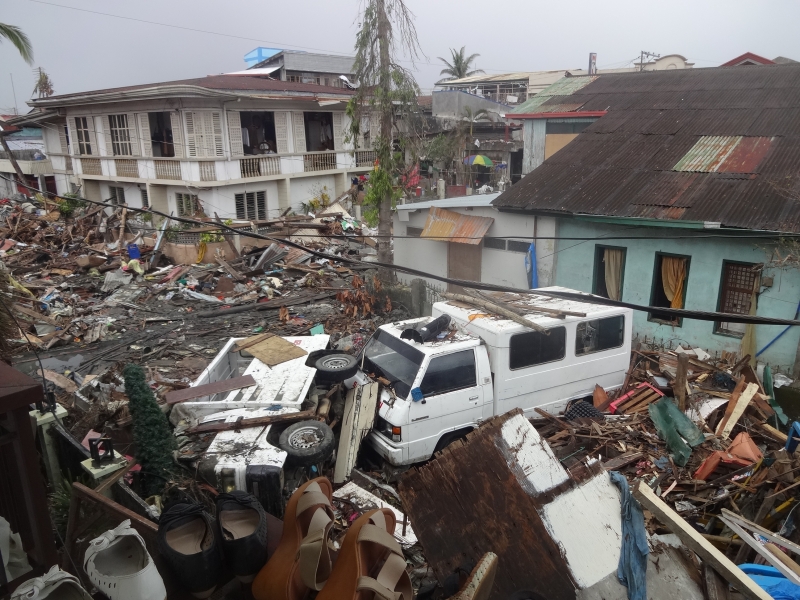Japan has been no stranger to large environmental and natural disasters over the last decade: the country has experienced several typhoons with flooding, earthquakes, heat waves, as well as the infamous Fukushima Daiichi nuclear disaster in 2011. In September, Typhoon Faxai hit Tokyo and Chiba prefecture; its strong winds and rains halted train service, damaged buildings, and took down power lines. It left three dead and dozens injured. Only a few weeks later, Typhoon Hagibis tore through the Kanto and Tohoku regions. The typhoon was so strong that three days after reaching Japan, the National Weather Service in Anchorage, Alaska, reported remnants of the typhoon had reached the other side of the Pacific.

Even with Japan’s advanced flood control infrastructure, Typhoon Hagibis stood out due to the extensive damage it caused due to the collapse of levees at 140 locations on 71 rivers in seven prefectures, as well as numerous mudslides due to heavy rainfall—some areas experiencing as much as 40% of the yearly rainfall in one or two days. Although the extent of damage is still being accounted for three weeks after the disaster, NHK (Japan Broadcasting Corporation) reported that 88 people died, 74,000 homes were flooded, and 4,000 people were still in evacuation facilities.
The city of Koriyama in Fukushima prefecture, located near the Abukuma River, experienced some of the worst damage from the rapid flooding and mudslides, making it hard for residents, particularly the elderly, to reach higher ground. Some residents reported that the areas damaged were not originally included in the city’s flood hazard map, which de-incentivized the need to evacuate from the area.
The extent of the disaster raises questions not only about the ability of Japan’s well-designed infrastructure to hold up against large typhoons such as Hagibis, but whether the high cost of continued investment in flood protection is justified for development located in flood plains and near rivers. For some severely affected areas, such as Koriyama, evacuation was ultimately the most effective strategy. Engineering and infrastructure have been the focus of Japan’s disaster resilience approach, but some argue that a critical part of resilience strategy going forward will require local governments to focus on communicating the risks and evacuating residents located in vulnerable areas.
Due to climate change, the increasing probability of recurring severe storms within a matter of weeks will continue to present critical challenges for Japanese cities. Although Japan’s built infrastructure and natural disaster response is considered one of the best in the world, disasters such as Typhoon Hagibis expose the urgency for the country of ramping up their current climate change resilience and adaptation strategy, especially on a local level.
On a national level, the country has been taking steps to build a more robust strategy for climate change adaptation. In June 2018, the Japanese Diet promulgated the Climate Change Adaptation Act, which requires the government to develop a national climate adaptation plan; conduct climate change impact assessments; and establish a cooperative framework between national and local governments, the private sector, and the public. In November 2018, Japan’s Cabinet approved a national climate change adaptation plan, which “mainstreams adaptation into government policies, uses best available science in policymaking, promoting regional adaptation, [as well as] promotion of international cooperation and contribution.” The plan also discusses the adaptation measures for most vulnerable sectors, such as agriculture, water resources, natural ecosystems, coastal areas and natural disasters, human health and heat illness, industrial and economic activity, and urban infrastructure.
In terms of protecting communities from flooding and natural disasters, the plan addresses the need for well-designed local climate adaptation plans, further development of local hazard maps and evacuation plans, as well as to promote urban development that considers disaster risk. In the near future, it may also need to incorporate strategies and policies to provide incentives for residential relocation away from high-risk areas. Many Japanese communities hold strong values in rebuilding what is lost, as well as maintaining connection to local culture and family ties. However, as the warming climate increases the frequency and intensity of storms, some communities repeatedly affected may have no choice but to move away.
